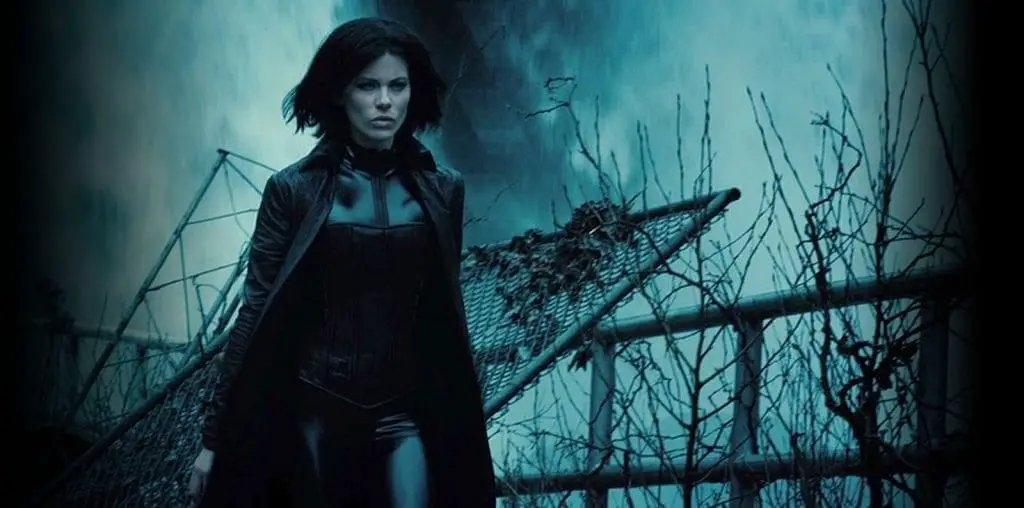
A man’s tiny lapse in judgment creates fatal consequences for his family, community, and himself—but it’s what happens after that which is astounding.
Blake Robbins’ feature The Sublime and Beautiful is a very thought-provoking drama with a great deal of suspense. Set against the flatlands and majestic skyline of rural Kansas, the film focuses upon the Conrad family. Dr. David Conrad (Blake Robbins) is a 40s-something college professor, with all the insecurities of every other aging academic. He worries about his receding hairline, his rapidly disappearing six-pack, and whether or not his all too settled existence has diminished his overall sexuality.
Of course it doesn’t help that his more youthful, best friend Mike (Matthew Del Negro) endlessly teases Conrad about his hefty mid-section, after a strenuous workout at the local gym. Conrad’s wife Kelly (Laura Kirk) is the kind of woman many men hope to marry, but seldom get the chance. Kelly is attractive, attentive, agreeable, and not the least bit self-absorbed or ambitious. The couple share their modest but comfortable home with two young daughters, and a son about three years of age. An ideal home life for most, if only Conrad could stop thinking about himself and all that he’s given up.
Naturally working at a college, Conrad has more than his share of beautiful young graduate students, enthralled by their much older teacher. Not surprisingly, Conrad falls prey to one such charmer named Katie, yet another Nina-Dobrev (Vampire Diaries)-doppelgänger, if ever I saw one. Katie (impeccably played by Anasatasia Baranova) is everything one in Conrad’s predicament would fall for—a subtle mixture of youth, prettiness, sensitivity and grace. It is at this precarious juncture that Conrad’s error in judgment unfolds, when he chooses to go to the nearby pub to listen to Katie sing, instead of accompanying his family to his parents’ place for Christmas festivities. And the rest is history.
The Sublime and Beautiful is Blake Robbins’ premiere feature film, and as such, has numerous strengths, and a few weaknesses that sadly, muddle the tempo and power of its story. Luckily, the movie’s force overpowers its flaws, and that’s what keeps us glued to the screen even when we’re tempted to walk away.
Robins’ power as a filmmaker is derived from his keen acuity to natural beauty, human frailty, and societal imperfections. His visual attentiveness to those little things most take for granted— like his dog going about his doggy-existence, or his daughters dutifully reading in the car, or articulating their wishes—is nothing short of exquisite. Robbins extensive experience as a television and screen actor enables him to understand his actors and direct them in such a way that their portrayals feel believable. As a result, each character in the film is strong and unforgettable. What moves me most of all, is Robbins grip on narrative-ambiguity, offering just the right recipe to keep us wondering what’s really happening, and why.
As for the weaknesses, I see three of varying intensities. The first big one is what all us beginning filmmakers succumb to, and which only experience rectifies. It concerns recognizing that certain scenes in a film must be cut, even though we can’t bear to do so. In this instance, there are far too many poignant but inconsequential scenes that make the film needlessly long.
The next problem concerns too much sparseness of dialogue in the narrative structure. Generally less is more, but not when it’s taken to such an extreme that it hurts the overall tempo and fluidity of the storytelling. The final flaw is a minor technicality that could probably be fixed in post-production. A few scenes are too dark, which hampers our ability to recognize fine details in faces. Ordinarily, this is no big deal, except that The Sublime and Beautiful is all about subtleties and fine details.
Even with its flaws, I think The Sublime and Beautiful is a thoughtful and intriguing film that deserves much attention. I’d also keep a sharp eye on Blake Robbins, and any new projects he sends our way.

